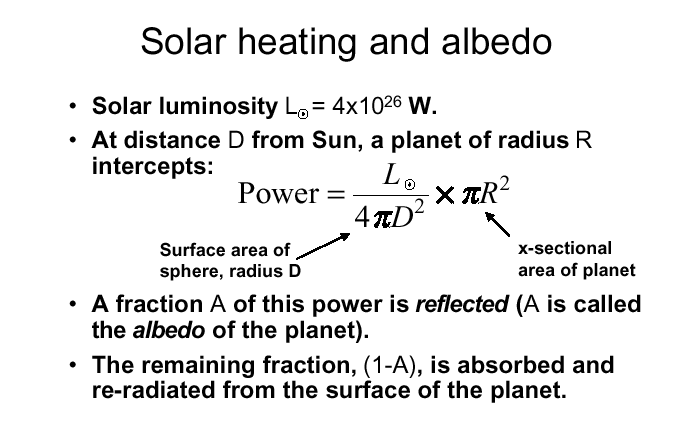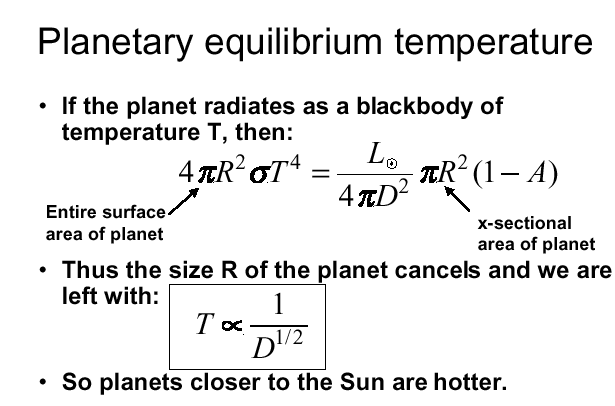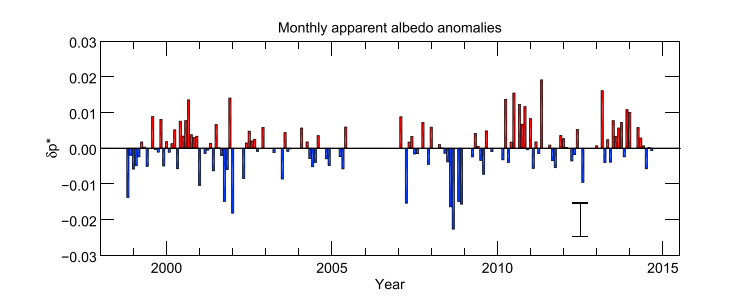The simplest case is a planet without an atomsphere so we start with that and simply balance received flux vs outgoing flux. The received flux is simply:


For the earth, the bulk albedo is 0.3 - 0.35 -- it is variable because of the variable nature of the primary source of reflectivity, cloud cover. A secondary source is Ocean Sea Ice, primarly the Arctic. The data on the variablity of the Earth's alebdo is shown here and there may be a decadal cycle associated with this trend variablity:

What we wish to do is to derive a simple
expression for how the atmosphere modifies the temperature of a
planetary surface
Before doing this, we need to make some assumptions about our
atmosphere.
- The atmosphere is Thin
- The atmosphere is supported by pressure equilibrium (hydrostatic
equilibrium)
- The atmosphere is isothermal
- The equation of state is the Ideal Gas Law
These assumptions allow us to treat the atmosphere as a thin, uniform
slab of material at constant density and temperature.
First some constants:
- Solar Constant:
- Fo =
Flux at the top of the Earth's atmosphere =
1370 watts per square meter (W/m2)
- Stefan-Boltzmann constant s = 5.67 x 10-8

Going back to the planetary equilibruim temperature we see that
4σT4 =Fo(1-A)
or
T4 = ((1/4*1370)/σ)(1-A)
T = 278*(1-A)1/4
For A = 0.3 one gets T = 254K ; For A = 0.35 T = 250K
Observed average temperature = 288 K  hooray for the greenhouse effect. hooray for the greenhouse effect.
|
 hooray for the greenhouse effect.
hooray for the greenhouse effect.

